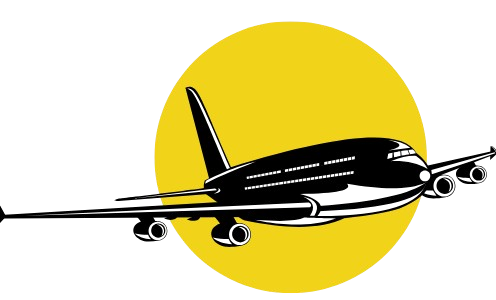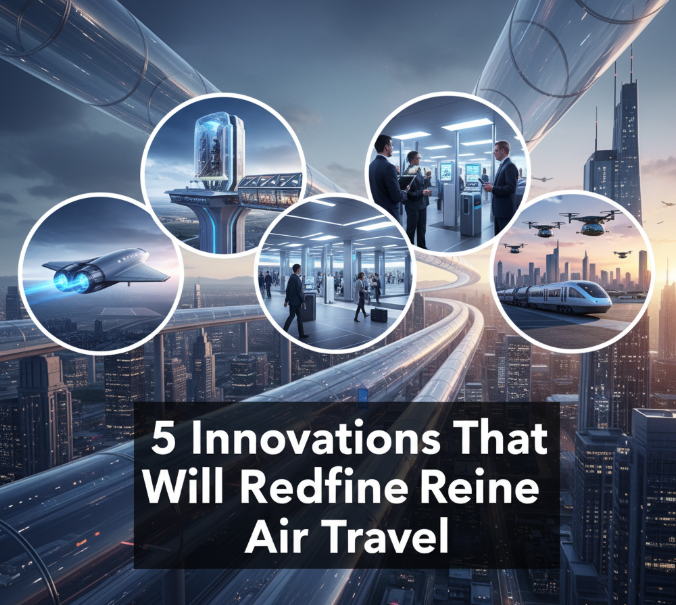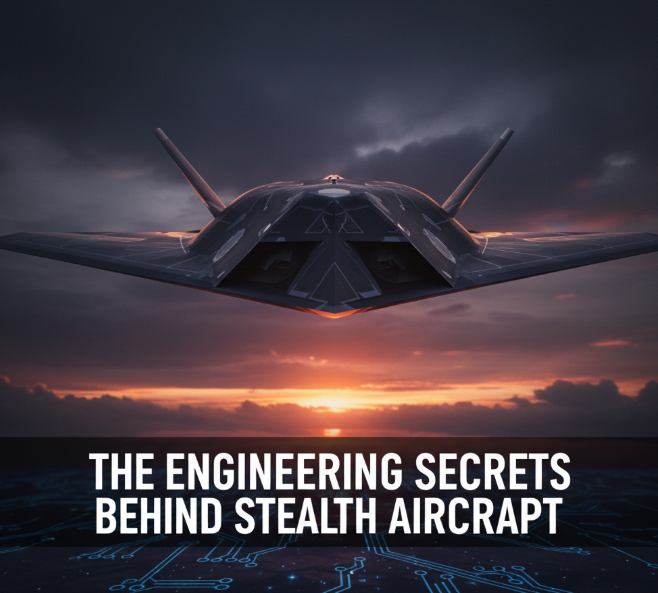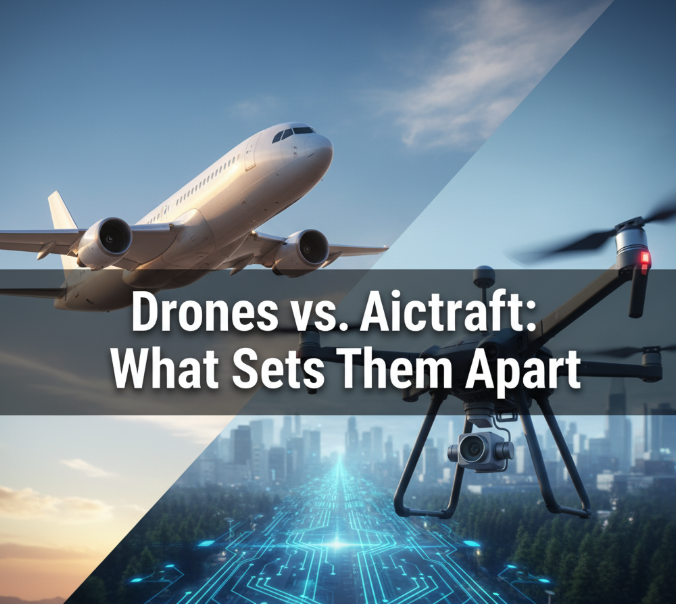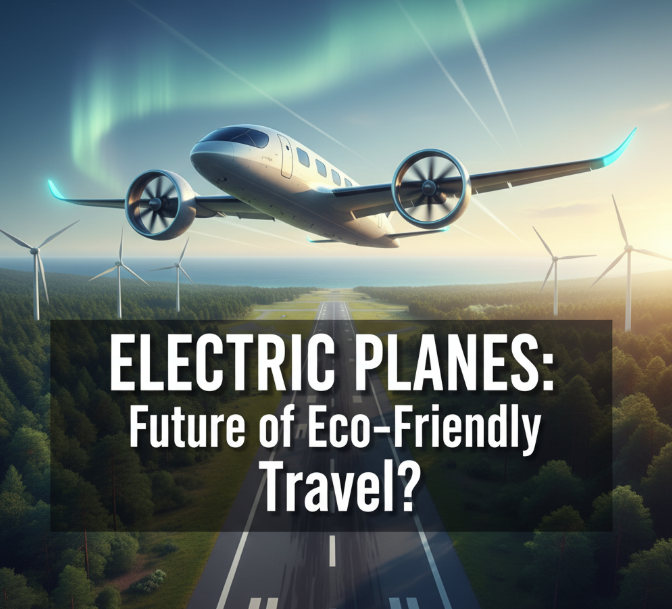We’ve come a great distance since the Wright brothers first flew in 1903. Today, millions of people are flying on airplanes, circumnavigating countries and oceans in just a few hours. But the aviation business is not stopping there. Engineers, scientists and innovators are developing game-changing technologies that will revolutionize how we fly.
Envision getting into a flight that’s powered by clean fuel, or sitting in seats that mold themselves to the contours of your body, or traveling stupendously fast—supersonic speed—and reducing the time it takes you to get from one place to another by half. Now, these aren’t just dreams — they are coming true. The future of flying is faster, cleaner, smarter and more comfortable than ever before.
In this article we’ll examine five of the biggest aviation innovations, each poised to revolutionize the world of flight. From electric planes to power artificial intelligence systems, its applications are endless — and as it grows, these new entrepreneurs will become household names. Let’s take a deep breath and see what the future holds for passengers — as well as airlines.
Flying Clean: The Electric and Hybrid Plane Racing Near You
The aviation industry is responsible for 2-3% of the world’s carbon emissions, a share that is only expected to grow as more people take to the skies every year. Airlines and plane makers realize they will need to find cleaner ways to power planes and electric propulsion is in the vanguard.
How Electric Planes Work
Electric planes, unlike traditional jets, run on batteries or hybrid systems. Think of it the way you’d compare a Tesla to a regular gas car—same idea, just infinitely more complicated because planes need way more power to keep from falling out of the sky.
Electric planes for short flights are already being tested by a handful of companies. These jets are just right for flights of less than 500 miles, such as between New York and Boston, or Los Angeles and San Francisco. The batteries contain electricity that the electric motors, which are attached to the propellers or fans, use to generate thrust.
Real Progress Happening Now
This is not just something big manufacturers are talking about — they’re actually building real planes. Here are some examples:
- Sweden’s Heart Aerospace is working on a 30-passenger ES-19, while its accomplice Italy-based Avio Interiors has proposed the 40-seat ES-40, which can fly up to 250 miles purely on electric power.
- Beta Technologies built an electric plane that can take off and land vertically, ideal for city-to-city travel.
- The proud Arlington-based startup, Eviation Aircraft, had just put its sleek Alice — a nine-passenger beast currently being built and tested at Moses Lake in Grant County — through a successful test flight.
Even old-school aircraft giants are getting in on the action. Airbus unveiled its ZEROe concept, with the goal of developing the first hydrogen-powered commercial aircraft by 2035. Boeing is working with smaller electric aircraft companies to experiment with this technology.
Why This Matters for Travelers
Electric planes will alter flying in a few key respects:
- Quieter flights: Electric motors are much quieter than jet engines, so the roar of takeoff and landing is less disruptive for people under a flight path.
- Cheaper for customers: Electricity is cheaper than jet fuel, and airlines could pass on the savings to passengers.
- Cleaner air: Zero emissions while flying equals cleaner air in the vicinity of airports.
- New routes: Smaller electric airplanes could open up new regional routes between cities that do not have direct flights today.
Battery technology is the key concern at the moment. Batteries are heavy, and they do not pack a lot of energy for their weight, compared with jet fuel. Yet every year, scientists are devising better batteries, so most experts think electric planes will make common sense for short flights in the next decade.
| Aircraft Type | Range | Passenger Capacity | Estimated Launch |
|---|---|---|---|
| Heart ES-30 | 250 miles | 30 | 2028 |
| Eviation Alice | 440 miles | 9 | 2027 |
| ZEROe (Airbus) | Over 2,000+ miles | 100-200 passenger capacities projected on a hydrogen aircraft entering service in the mid-2030s | Mid-2030s |
Breaking the Sound Barrier Again: Now, Supersonic Jets for the Rich and Privileged
Remember the Concorde? That sleek, needle-nosed jet carried passengers from New York to London in 3.5 hours at twice the speed of sound. It ceased flying in 2003, but supersonic travel could soon come back with a vengeance thanks to modern-day technology.
The Need for Speed
The fastest commercial planes today cruise at approximately 575 miles per hour. Supersonic jets fly faster than the speed of sound — over 760 miles per hour at sea level. The next generation of supersonic aircraft is being developed to fly even faster and address the problems that brought down the Concorde.
Other companies are in a race to bring supersonic passenger flights back:
Boom Supersonic is constructing the Overture, a super-sleek jet that will travel 65-80 passengers at Mach 1.7 (or roughly 1,300 mph). United Airlines and Japan Airlines have already placed orders. The company says they’ll be able to get from New York to London in 3.5 hours and Los Angeles to Tokyo in just 6 hours — compared with 11 hours or more now.
NASA and Lockheed Martin are developing the X-59 airplane as an attempt to address the sonic boom issue. When planes break that sound barrier, they create sonic booms so loud and terrifying people can hear them from the ground. The X-59 generates a much softer “thump” that more resembles the closing of a car door than an explosion.
What Sets New Supersonic Jets Apart
The next generation of supersonic planes are not just faster Concorde copies. They also integrate the latest technology to add practicality:
- Greater fuel efficiency: The invention of new engines that burn less fuel per seated passenger than its predecessor, the Concorde.
- Quieter sonic booms: Specially shaped and designed to reduce sound disruption.
- Sustainable fuel options: These jets can be powered by clean, plant-based aviation fuels.
- Less expensive: Firms hope to peg ticket prices at or below the cost of today’s business class fare, not the astronomical price of a Concorde ticket.
Impact on Business and Travel
Supersonic jets will mainly serve business travelers and those who have to fly across oceans fast. Consider beginning a morning meeting in New York and being back home in London for dinner — all within the same day. This technology could have an impact on how global businesses work, and make the world feel a little smaller and more connected.
The biggest hurdles are winning regulatory approval and demonstrating that the planes can be operated safely and economically. But with big orders from major airlines, and test flights planned for the late 2020s, supersonic passenger travel appears to be poised for a return in the next five to seven years.
Your Personal Flight Attendant: A.I. Takes Over Control
We were already living with artificial intelligence, whether we realized it or not — in the form of virtual assistants, recommendation algorithms and so much more. Now, it’s revolutionizing air travel to make flying safer, greener and more personalized.
AI in the Cockpit
Today’s planes already feature complex autopilot systems, but the next generation of AI goes far beyond that. These systems can:
- Study weather patterns and automatically reroute to avoid turbulence.
- Monitor thousands of sensors throughout an airplane to predict when maintenance is needed before it causes problems.
- Fully adjust power in real time for optimal use of fuel depending on wind, weight and distance to individual destination.
- Provide pilots emergency assistance information for better decision-making by processing the data at lightning speed and noting probable solutions immediately.
Some experts believe we may one day be headed for single-pilot or even pilotless commercial cargo flights, with AI managing most of the flying. But passenger aircraft are probably going to keep human pilots on board, working in concert with AI rather than being replaced wholesale by it.
Personalized Passenger Experience
AI is not just aiding pilots — it’s making the passenger experience better, too. Airlines are using AI to:
- Bring your entertainment: Your smartphone, tablet and laptop have been incorporated into systems so you can access more seatback screens than ever; from web surfing to texting, it’s all at your fingertips.
- Anticipate what you like: AI knows if you prefer a window seat, are a vegetarian or need extra legroom and can preselect these for booking.
- Deliver immediate assistance: Chatbots and virtual assistants would field queries about flights, gates, delays and baggage without requiring customers to wait for a customer-service agent.
- Pricing optimization: Airlines are leveraging AI to dynamically manage prices based on demand, allowing them to fill more seats while possibly providing better deals for passengers with a bit of wiggle room.
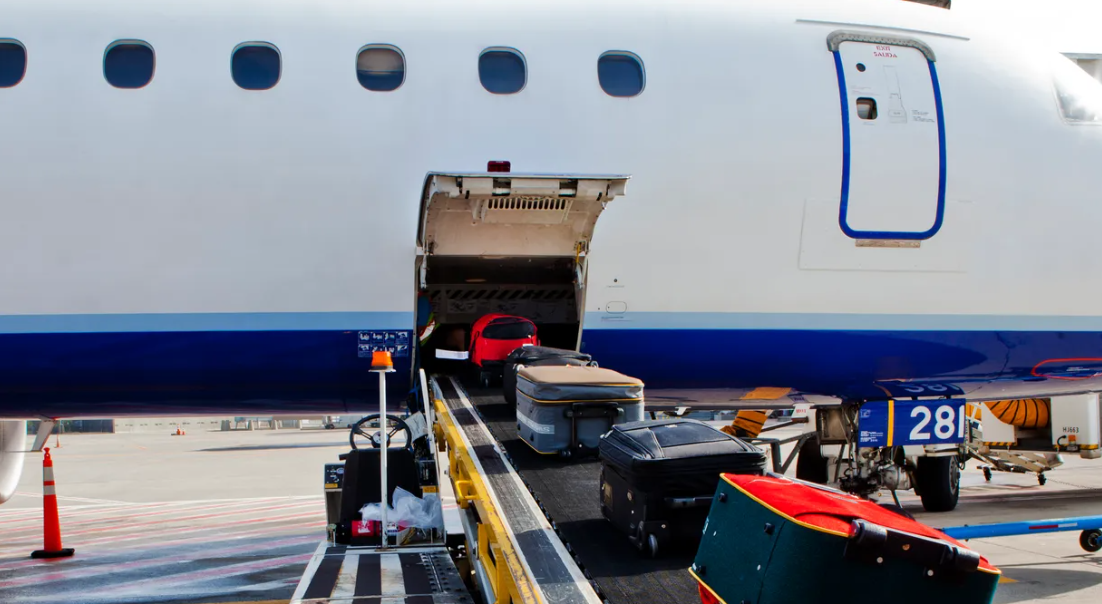
5 Innovations That Will Redefine Air Travel
Smoother Airport Operations
AI is at work behind the scenes, making airports run more efficiently:
- Security screening: Faster and more accurate than traditional x-ray machines, scanners that rely on AI are able to recognize prohibited items sooner.
- Baggage handling: Intelligent systems follow luggage around the airport, anticipating where bottlenecks could develop.
- Gate management: Use AI to gate and schedule operations to reduce delays.
- Crowd management: Systems can be used to track the flow of passengers and send them along less crowded security lanes or gates.
Delta Air Lines has installed AI systems that crunch data from previous flights to forecast potential delays before they occur. That enables the airline to adjust early to keep more flights on time. Other large carriers are also coming out with similar technology.
Privacy and Security Concerns
While A.I. gathers more information on passengers, airlines will have to guard privacy and responsibly make use of that data. The majority of airlines now give passengers the power to determine what information can be collected and how that information can be used. The industry is developing standards to protect AI systems against hacking and guarantee they reach fair, unbiased decisions.
When an airline combines AI in flight operations, passenger services and airport management they can make the entire flying experience as stress-free as possible. In just a few short years, AI will impact almost every step of your journey.
Comfort and Tech Collide: The Future of the Cabin
Airplane cabins have remained relatively the same for decades: rows of seats, overhead bins, tiny bathrooms. But airlines and airplane manufacturers are reimagining entirely what the inside of a plane should look like.
Smart Seats That Adapt to You
The seats you sit in are about to receive a major upgrade. New designs include:
- Pressure-sensing materials that conform to your body shape and weight, much like higher-end mattresses.
- Health monitoring that can track whether you’ve been sedentary too long and suggest stretching or moving so you don’t get blood clots on a long flight.
- Climate control: Multiple climate control zones that allow passengers to operate individual climate controls without affecting others.
- Massage and posture correction that can alleviate back aches on long flights.
Some ideas even contain seats that can transition to upright, reclined and fully flat positions more seamlessly, bringing economy passengers additional comfort choices while not taking up extra space.
Windows and Lighting Revolution
Boeing’s 787 Dreamliner brought you electronic dimming windows that darken or lighten at the push of a button, offering the leading edge in comfort and convenience. The next step is even cooler:
- Display windows for seats without traditional windows could show live views from external cameras, other scenes or in-flight information.
- Circadian rhythm lighting that changes color and intensity throughout the flight to help people relax, fall asleep faster and reduce jet lag by managing exposure to light relative to the destination time zone.
- Personalized reading lights that light only your area without bothering people trying to sleep around you.
Cabin Air Quality Improvements
The pandemic made people more conscious of air quality, and airlines made improvements like better filtration and airflow systems. New technologies include:
- HEPA filters with UV light technology to kill viruses and bacteria.
- Climate control that stops cabin air from becoming so dry, which is uncomfortable and may even have negative health effects.
- Air flow patterns that reduce how much air goes between passengers.
Space Innovation Without Adding Size
Airlines seek to fit more people without squeezing them. Cool designs can do this simply by the way they’re built:
- Overhead bins that store 50% more luggage and are easier to reach.
- Seats that are thinner but provide more support to free up legroom in the same space.
- Adjustable cabins so that airlines can reconfigure a plane depending on where its routes are busiest, say adding more business class for executives jetting between Hong Kong and London as opposed to tourists going to the Turks & Caicos.
- Standing areas for flights that are less than 2 hours in duration, similar to train standing room but at a bar height counter.
Airbus has shown off an “Airspace Cabin” which encompasses many of these features. These advances are only gradually being adopted by airlines, but most new orders for aircraft come with at least a smattering of next-generation cabin features.
In-Flight Connectivity Gets Faster
Internet on planes has traditionally been slow and unsteady, but that is changing rapidly. New satellite systems from companies like SpaceX’s Starlink are offering speeds similar to home internet:
- Stream movies in high definition
- Make video calls
- Upload and download large files
- Play online games
Several airlines are already testing or adopting these high-speed systems and, within just a few years, fast internet should be the norm on most flights.
| Feature | Current Standard | Next Generation |
|---|---|---|
| Internet Speed | 5-10 Mbps | 100+ Mbps |
| Seat Recline | Fixed angles | Adaptive positions |
| Air Changes | 15-20 per hour | 30+ per hour |
| Window Control | Shade or open | Electronic dimming/displays |
Building a Better Plane: Advanced Materials and Manufacturing
The stuff planes are made of, as well as how they’re built, might not sound exciting, but these changes will make them stronger and yet lighter, more efficient to fly and less costly to run.
Composite Materials Take Over
Today’s planes, like the Boeing 787 and Airbus A350, are constructed from around 50% composite materials — primarily carbon fiber reinforced plastic — instead of aluminum. These materials are:
- Lighter: They are much lighter than aluminum of equivalent strength.
- Stronger: They can withstand more stress and last longer.
- More malleable: They can be bent into more streamlined shapes by engineers.
- Won’t rust: Composites don’t corrode or rust from salt and moisture as metal does.
Just the weight savings is a huge difference. A lighter plane uses less fuel, a cost reduction that lowers emissions. An airline saves about 0.75 percent in fuel for every 1 percent of aircraft weight that is eliminated.
3D Printing Transforms Manufacturing
Three-dimensional printing (also known as additive manufacturing) is in the process of transforming how aircraft parts are produced. 3D printers create parts by building them up layer by layer, different from cutting them away from large blocks of metal.
Benefits include:
- Complex shapes where it would be difficult, or very expensive, to machine traditionally.
- Less waste as material is added only where it’s needed and not removed.
- Quicker replacement part production, less aircraft downtime.
- Lighter material through internal components that are hollow.
GE Aviation has already 3D printed over 100,000 fuel nozzles for its jet engines. The nozzles are 25% the weight of traditionally produced parts and five times more wear resistant. Airbus is already 3D printing a number of cabin parts, and even some structural components.
Self-Healing Materials
Researchers are working on materials that heal themselves:
- Polymer coatings that can repair scratches and dents on their own.
- Crack-closing composite materials with capsules of repairing agent activated by cracks.
- Sensors smart enough to sense damage in materials and prompt maintenance crews.
Today, these are mostly found in research labs, but one day they could help make aircraft safer and cut maintenance times and costs.
Digital Twin Technology
A “digital twin” is a virtual replica of a physical aircraft that lives in a computer. Its digital twin for every airplane:
- Reflects everything that is happening with the actual airplane.
- Conducts simulations to determine when parts are likely to fail.
- Simulates various maintenance regimens before trying them on actual aircraft.
- Keeps a history of each part as long as it exists.
This technology allows airlines to keep planes, in terms of maintenance, more efficiently and can catch problems before they result in delays or cause safety issues. Both Boeing and Airbus rely on digital twins across the design and manufacturing process, while airlines are starting to use it for their fleets.
Sustainable Production Methods
Aircraft manufacturing is becoming greener:
- Renewable energy powers more factories.
- New planes are being built with partly recycled materials.
- Closed-loop facilities recycle water and other supplies that are integrated into their manufacturing processes.
- Decreased chemical reliance with the help of new protocols that yield similar results with less synthetic toxicity.
If you’re flying as a passenger, you won’t actually see these changes (though environmentally speaking, they are instrumental in making the planes we fly in less of an environmental burden).
Looking Forward
And because of the use of lighter materials, smarter manufacturing and better upkeep through digital technology, future aircraft will be more fuel efficient, reliable and environmentally friendly. These advances also make planes last longer — some aircraft constructed today could be flying 40 or 50 years from now.
What This All Means for You
These five breakthroughs — electric propulsion, supersonic flight, artificial intelligence, advanced cabins and new materials — will not all arrive in a single package. Some of these, like AI helpers and advanced in-cabin features, are appearing on flights today. Others, such as widespread supersonic travel and full electric long-haul flights, are many years off.
But the trajectory is apparent: Air travel is entering its most exciting phase of innovation since the dawn of the jet age. The planes you’ll fly on in 2030 and 2040 will look nothing like today’s aircraft. And they will be cleaner, faster, smarter and more comfortable.
For passengers, this means:
- Greater choice for travelers as electric planes open new regional routes.
- Speedier travel once supersonic jets make a comeback.
- AI-powered personalization and new cabin designs for better experiences.
- Reduced environmental footprint from better-designed aircraft and sustainable fuels.
- Lower potential costs as airlines benefit from advances in technology.
Real-world concerns — lowering emissions, controlling expansion and democratizing flight — are real challenges for the aviation industry. But these advancements are a sign that engineers and companies are working hard to fix those problems — while making flying better for everyone.
The next time you’re on a plane, notice the technology around you and contemplate how different that might be in only a few years. The future of flying is being built right now and it’s going to be spectacular.
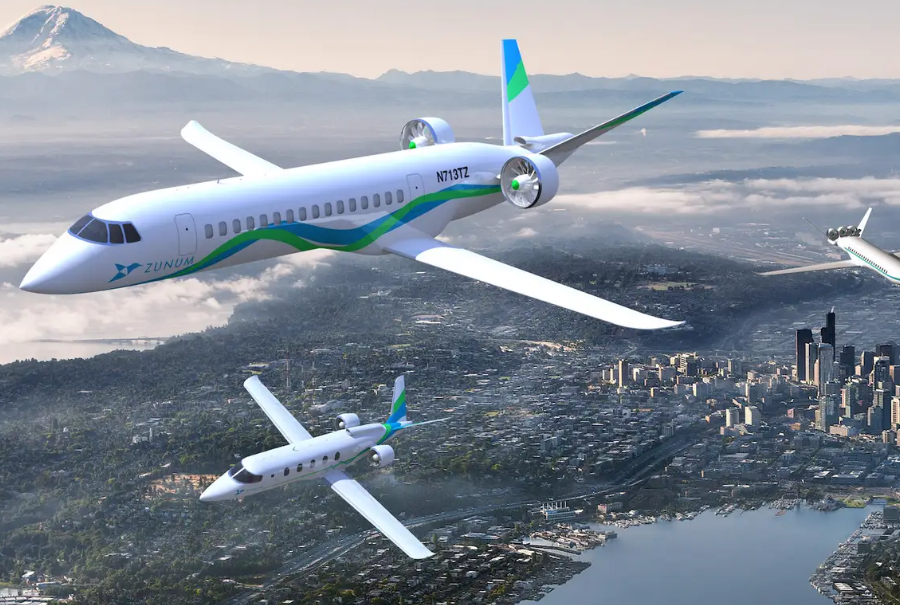
Frequently Asked Questions
When will the general public have access to electric planes?
Electric small planes for short routes (less than 300 miles) on 20-seat regional and commuter services are expected to enter commercial service between 2027 and 2030. Airlines have already been ordering these planes. But electric planes for longer flights are not expected to be available until the 2030s or even the 2040s, when battery technology will need to have improved significantly.
Will supersonic travel be attainable for the average traveler?
At the outset, supersonic flights will be priced similarly to today’s business class tickets — expensive, though not as wildly costly as a Concorde seat used to be. And as the technology matures and more planes enter service, prices could come down lower perhaps to premium economy levels within 10-15 years.
Is artificial intelligence safe to fly our planes?
Yes. Artificial intelligence in aviation gets extensively tested and is regulated. They support human pilots rather than replacing them, and work to make better decisions and catch potential problems earlier. Studies show that A.I.-assisted flights are indeed safer than unassisted ones, because the technology can analyze information at greater speed, and doesn’t get tired or distracted.
How much quieter are electric planes than regular jets?
Electric aircraft are vastly quieter — producing about 70% less noise than conventional jets during takeoff and landing. The principal noise is made not by the engines but by air running over the plane. This is like the gap between an electric car and a regular car, but even more extreme.
Does this mean flying is going to cost more?
Some innovations will raise costs in the short run, but clearly there should be more savings than increases. Electric planes are less expensive to fuel and maintain. AI makes operations more efficient. New materials strip away weight and add fuel economy. Airlines that adopt these technologies ought to be able to provide comparable or lower pricing as well as better service.
Are hydrogen-powered planes really possible?
Yes, and several companies are working on them. While in flight, the only byproduct produced by hydrogen fuel cells is water, meaning they are completely emission-free. The obstacles are largely how to store hydrogen safely on a plane and the infrastructure issues involved in providing it at airports. Airbus has set a target to get hydrogen-powered commercial planes into the air by 2035.
What are the implications for flight attendants and pilots?
These developments will transform job roles, not eliminate them. Pilots will work alongside AI, rather than be replaced by it. With systems programmed to perform some routine duties, flight attendants will find themselves with more time for passenger service. Both jobs would involve learning new skills, though the human touch is essential for safety, customer service and dealing with the unforeseen.
Are there any such innovations I can experience today?
Yes! Many airlines already employ AI capabilities, often in customer service and personalization. Many of the planes flying today have more advanced cabin designs with air filtering, bigger windows and better seating. More airplanes are having faster internet installed right now. Electric planes and supersonic jets may not be transporting passengers yet, but there are already a number of other innovations working to enhance your flight experience.
